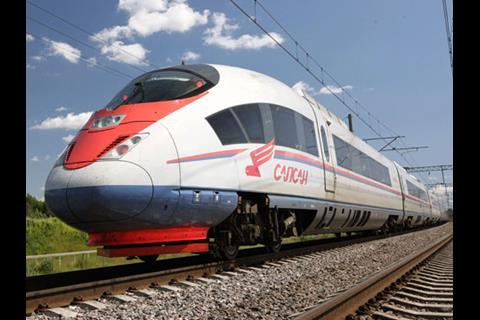RUSSIA: A non-binding memorandum of understanding to plan a high speed railway between Chelyabinsk and Yekaterinburg was signed by the Russian Direct Investment Fund sovereign wealth fund, Siemens Mobility and the Economic Partnership Ural High-Speed Rail on February 15, on the sidelines of the Munich Security Conference 2019.
The proposed 220 km double-track line would be suitable for speeds of 300 km/h. Four main stations would be located at Balandino and Koltsovo airports, Snezhinsk and Sysert, and there would be 10 intermediate stations, four traction substations, a depot and a control centre.
The project is being promoted by EP UHSR, which was established in March 2016 by the Chelyabinsk region, the Sverdlovsk region’s Development Corp of Middle Ural, RWM Capital Investment Group, Chelyabinsk Pipe-Rolling Plant, Russian Copper Company and Magnitogorsk Iron & Steel Works.
The cost is put at more than 300bn roubles, with implementation planned through a public-private partnership concession agreement. The aim is to begin construction in 2021 for commissioning in 2025.
EP UHSR Chief Executive Sergey Brevnov said the partnership agreement with RDIF and Siemens represented ‘a significant strengthening of the status and capabilities’ of the project.
The proposal for the line has already been approved by Prime Minister Dmitry Medvedev on the recommendation of the governors of the Chelyabinsk and Sverdlovsk regions, and Brevnov said he expected it to be included in the national infrastructure plan.
No federal funding has been allocated, however, and so local and private funding would be required.
RDIF Chief Executive Kirill Dmitriev said the sovereign wealth fund was one of Russia’s largest investors in the equity capital of infrastructure projects, which accounts for more than 40% of its portfolio. Noting that Yekaterinburg and Chelyabinsk each have a population of more than one million, he said the proposed railway was ‘of strategic importance not only for these regions, but also for the whole country’. It would ‘help to create the third largest urban area in Russia with a population of four million people.’



















